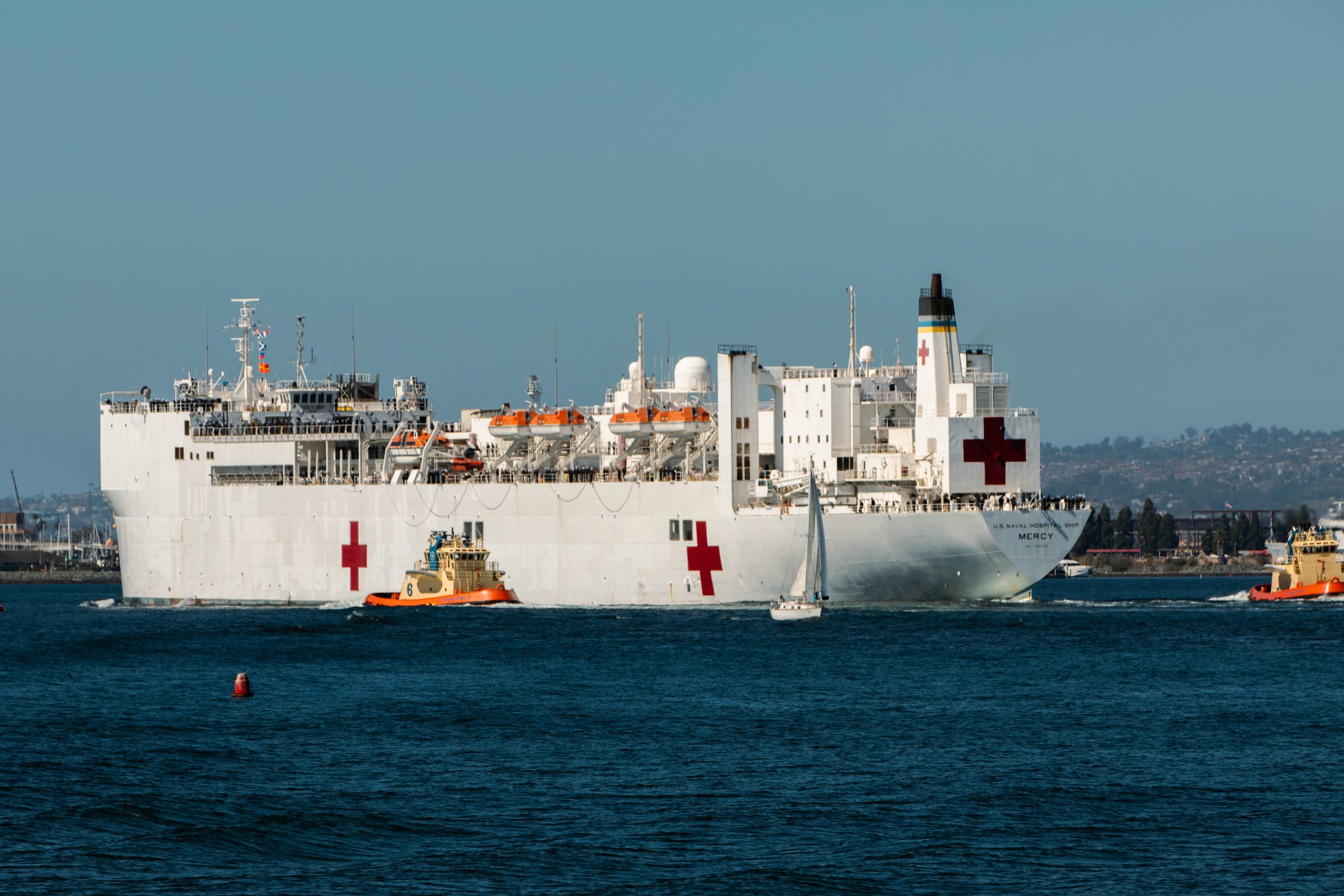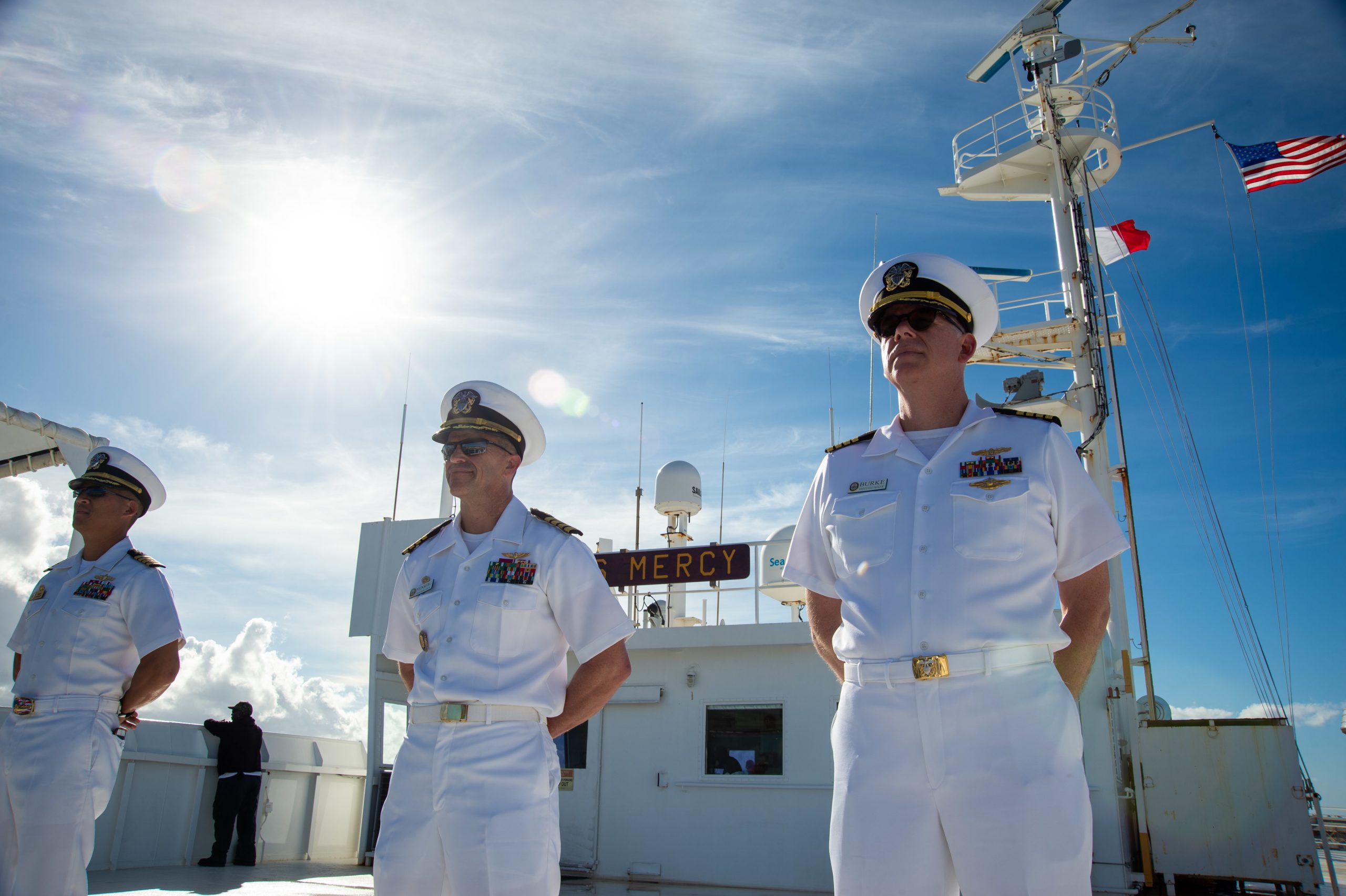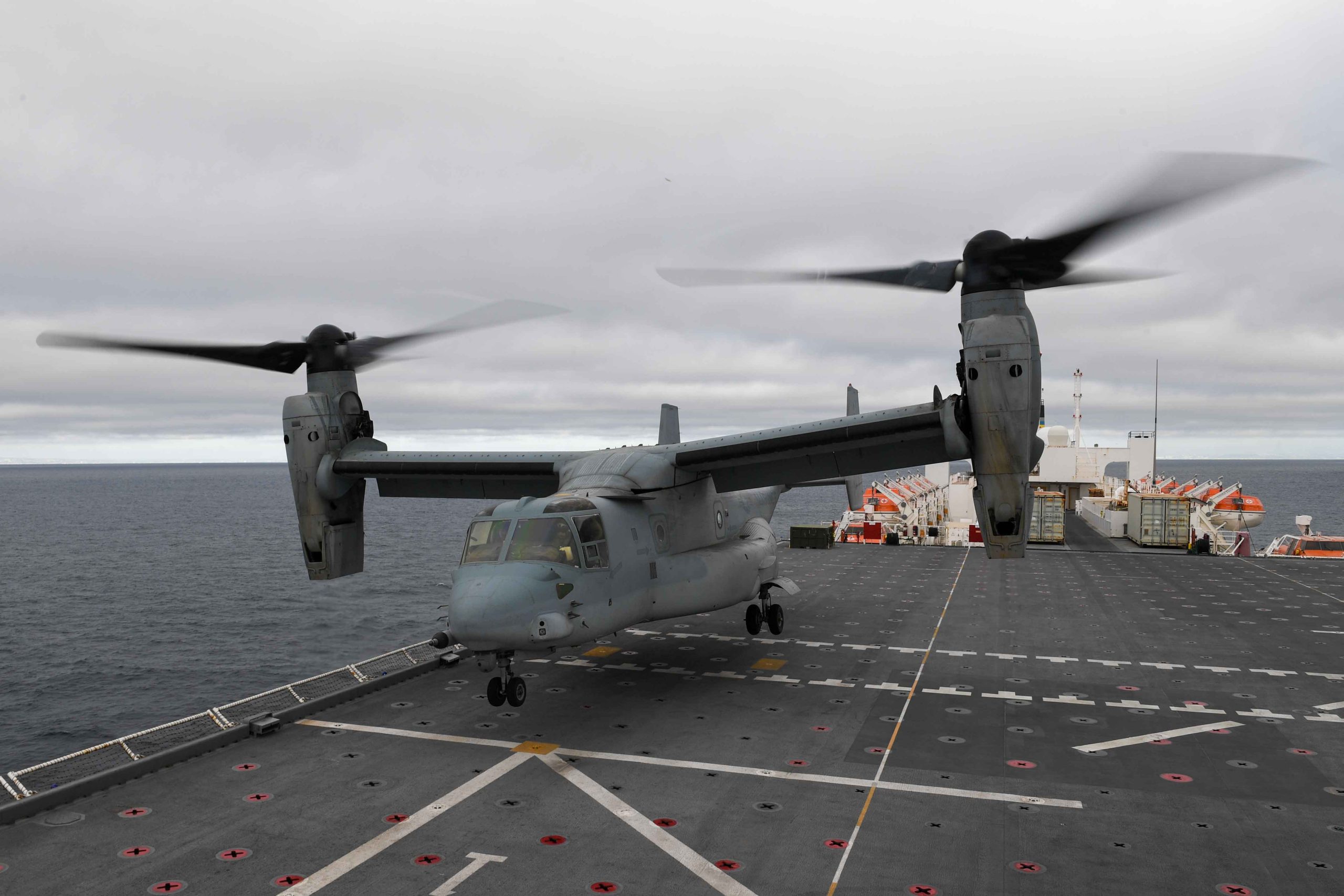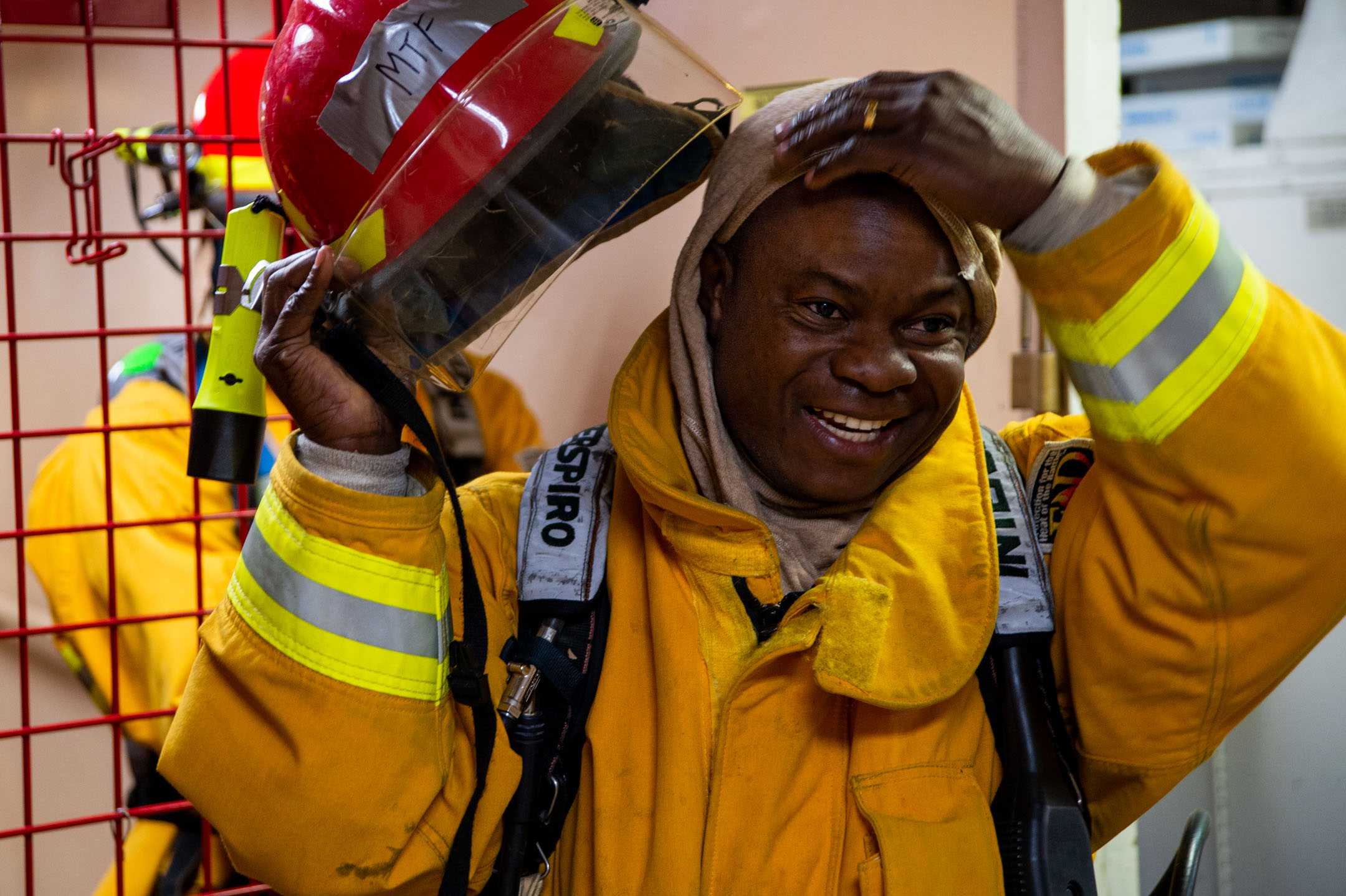
Hospital ship USNS Mercy (T-AH-19) left its San Diego, Calif., berth this week on a mission to Oceania, where embarked medical and engineering personnel will join U.S. partners in the region for humanitarian assistance and civic projects, and spread a bit of goodwill.
After a stop in Hawaii to pick up additional supplies and personnel, including members of the U.S. Pacific Fleet Band, Mercy is scheduled to visit the Marshall Islands, Solomon Islands, Palau, and the Federated States of Micronesia during Pacific Partnership 24.
Pacific Partnership, which began in 2006 after the devastating 2004 earthquake and tsunami that struck the Indian Ocean and Southeast Asia regions, is the largest annual, multinational humanitarian assistance and disaster relief preparedness mission conducted in the Indo-Pacific region. The goal is to strengthen relationships with allies and partners, bolster host-nation capacity to provide essential humanitarian services and support efforts to reduce risk and respond if disaster strikes, said Capt. Brian J. Quin, the PP 24 mission commander.
“We consider it a unifying mission to foster enduring friendship and cooperation among the nations,” Quin, who most recently commanded Amphibious Squadron 5 in San Diego, said from the ship. “Our tagline is: Pacific Partnership brings nations together to prepare in calm and to respond in crisis.”
“We’ve been invited in by those host nations to address the needs and concerns they have and we work hand in hand with their experts” to understand their local needs,” Quin said. “When we depart, they are better able to be self-sustaining in an everyday environment and better prepared to respond in the event of a disaster. Because they received an additional level of training that we’ve provided … we help them repair key pieces of their own infrastructure.”
The annual Pacific Partnership is a series of events, activities and interoperability exercises with U.S. allies and partners that often include medical support or reconstruction projects in remote places across the Pacific. Last year, Navy medical technicians showed an island community in the Philippines how to fix dental chairs, as most of what they had were broken and in need of repair.
“It made a significance difference for the dental health and the overall health of that population,” Quin said, adding, “it’s about relationships and trust and interoperability.”
The primary goal is to work with the ministries of health in order to help provide what they need, said Capt. Jeffrey H. Feinberg, who as Mercy’s commanding officer oversees the nearly 600-member medical treatment facility personnel aboard the ship.
“Even at the final planning conference, when the host nations representatives were out talking to us, you could feel the buzz that they were talking about Mercy, coming in and telling us about how the population is excited for Mercy to come,” Quin said. “They know what it means to have the ship there. They know this is an enduring mission for the United States, and its about not just establishing but reestablishing and reaffirming those bonds of friendship and trust.”
During its mission last year, Mercy treated 15,353 patients and did 372 surgeries during stops in the Solomon Islands, Palau, Philippines and Vietnam, according to the Navy.
Mission personnel also supported construction projects in those nations and in Fiji. Engineering projects aren’t just about new buildings or power plant repairs. Personnel train “the host nationals how to be a mechanic, so they’re giving them a really sustainable skill,” Feinberg said.
“They did the same with construction work … [with] skills so the host nationals could improve their own infrastructure,” he said.

This year, Navy Seabees and other personnel will join in Pacific Partnership’s engineering projects, which include renovations at various elementary schools, clinics and hospitals in the Republic of Marshall Islands, Solomon Islands, Palau and the Federal States of Micronesia, said Ens. Lacy Burkett, PP 24 public affairs officer.
“We have some experts who do a lot of bridge assessments coming in to work with them and make sure those assessments are done correctly, and can figure out how to shore it up,” Quin said.
A Marine Corps communications squadron from Okinawa will embark to provide communications support at each location and support the mission staff of 124 that includes Seabees and chaplains. A crew of 71 MSC civilian mariners operates the ship.
It’s a multinational mission, and this time the U.S. is partnering with Australia, Chile, Great Britain, Japan, Malaysia, Philippines and South Korea.
“Each of them has a role in one or more of the mission stops that we’re going to,” Quin said. “For the history buffs, it’ll be fantastic,” he added. “We’ll be at Guadalcanal, Peleliu. We’ll have the opportunity to see a lot of that history.”
Mercy will also visit the Solomon Islands as it hosts the Pacific Games.
“It’s a qualifying event for the Olympics,” Feinberg said. “They’re very proud of it, and they specifically invited us – the prime minister specifically invited Mercy back to be there and help support it during the Pacific Games.”
The quadrennial Pacific Games – this year it’s SOL 2023 – runs Nov. 19 to Dec. 2, with 5,000 athletes expected to compete at events hosted in the capital city of Honiara. Thousands more are expected to attend the games, and PP 24 teams already are on the ground helping them to plan and prepare their emergency response, from developing evacuation plans to ensuring sufficient defibrillators are on hand.
Medical Missions on Tap

As one of the military’s two hospital ships, Mercy’s primary manning is to support major combat operations. It provides high-level trauma and surgical care wherever it goes, with 12 operating rooms, four radiology suites, a 90-bed intensive care unit, 1,000 patient beds and a flight deck that accommodates MV-22 Osprey tiltrotor aircraft and helicopters.
So a mission focused on humanitarian assistance and disaster relief – one that includes medical, dental and vision care aboard Mercy and ashore – “changes things a little bit,” said Feinberg, a flight surgeon and family medicine physician by training who took command of Mercy in 2022.
Mercy is prepared to treat children – one of the ship’s wards has been decorated as a pediatrics ward – and, with this year’s focus on women’s health, obstetricians and gynecologists are joining the mission. They would be able to do hysterectomies and treat medical conditions that often can be fatal, he said, “so I think we have an opportunity to really help people out with that.”
For this mission, Feinberg said: “We’re going to be doing some cataract surgeries, which is fantastic. Depending on how extreme the cataract is, you may be almost blind. We can restore some vision.”
Mercy’s medical, dental and surgical teams will work aboard ship and split off at times for missions ashore.
“We don’t want to disrupt a business or a resource that is already in place in the location … so we’ll go someplace that doesn’t have any opticians,” Feinberg said. “We’ll go and set up at one of the health fairs.”
There, Navy medical technicians use autorefractors to check a person’s eyesight and determine a proper eyeglass prescription.
“We can reach back and correct people who have horrendous vision and they’re being led in by the hand because they can’t see well enough,” he said. “And we can give them glasses and send them out into the world, where they can read street signs or road signs.”
“That was always the longest line of the health fairs,” he said. “So I look forward to doing that. I know that we brought a lot of glasses.”
And sunglasses, too. Residents of the island-nations “get a lot of sun, they’re near the Equator and they get a lot of reflection from the water,” Quin said. Scarring of the eyes can obscure vision, but “you can prevent it if you get sunglasses that will block the UV rays. So we have thousands of sunglasses. We are excited for that, because if you can prevent someone from having disease, that’s better than treating the disease.”
Big, Lasting Presence

Mercy, homeported in San Diego as part of Military Sealift Command’s fleet, is kept in a ready status with a small crew of civilian mariners and Navy medical personnel. The floating hospital can be ready to deploy and operate in five days with up to 1,200 medical personnel and 71 civilian mariners, according to MSC.
At 994 feet long with a 106-foot beam, the ship is too big to dock at many of the smaller ports of island-nations of the South Pacific, so it often anchors offshore. In a way, that helps spread the word to locals of the Navy’s presence and its obvious purpose.
“Mercy is a giant billboard of ‘why,’” Quin said. “When Mercy shows up – a big white ship with a giant red cross – everybody knows why. Mercy is here to help, and not just help with direct care, but help in ways that have lasting impacts on the host nations. It’s why they invite us back.”
Feinberg recalled that during the Philippines mission last year, a local woman recounted how, some 30 years ago when Mercy visited there, she was in a terrible vehicle accident.
“She lost consciousness but the local hospital was out of options. She wound up coming to the Mercy, and they saved her life,” he said. “She still remembers it, so she came out 30 years later to say how thankful she was that we were there. It brought a lot of the crew to tears … a really powerful story … It was really moving.”
For Quin, the PP 24 mission will be a fitting end to his naval career. He was executive officer of guided-missile cruiser USS Shiloh (CG-67) when a devastating earthquake struck Indonesia on Dec. 26, 2004, and sent tsunamis across the Indian Ocean and Southeast Asia. He and the crew were in Hong Kong for a holiday liberty visit, but they quickly regrouped and soon were sailing off the coast of Sumatra.
A month later, Mercy sailed into the region and relieved Shiloh on station near Banda Aceh for Operation Unified Assistance, the U.S. military’s humanitarian assistance and disaster response mission.
“It’s nice to be able to have this little bit of a career coda,” he said, “and go back and have my final deployment on active duty to be something to be as meaningful as what we did then.”





